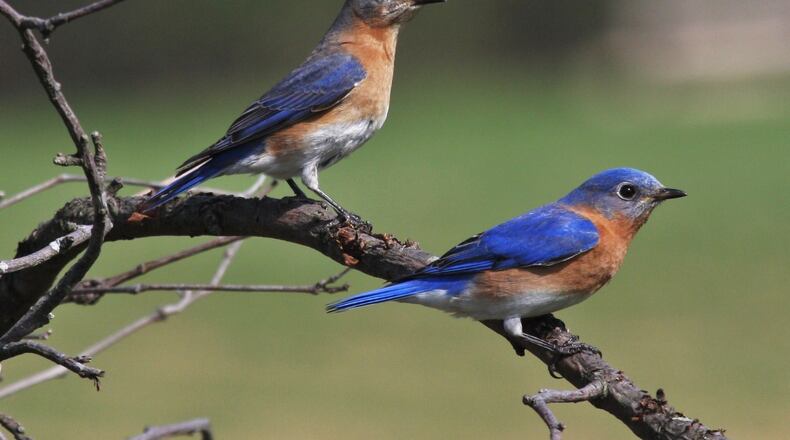Early June is prime songbird fledging time in Georgia, when numerous baby birds — cardinals, bluebirds, blue jays, Carolina wrens, brown thrashers and many more — leave their nests and try to fly for the first time. On that first flight, though, many of them don’t get very far and often end up on the ground or perched in a bush or shrub.
The fledglings, as they are called, are like bird teenagers — they have most of their feathers and can walk, but they’re still uncoordinated and still need a little time to strengthen their wings, develop flying skills and learn how to forage for food.
It’s not uncommon, then, to find young feathered birds at this time of year hopping around on the ground or hunkered down in shrubbery. Even so, their parents are still watching over them from a distance and will continue to feed them — about every half-hour or so — until the youngsters finally strike out on their own.
So, if you find a baby bird with feathers on the ground, chances are good that its parents are nearby and looking after it. “As long as the baby is not in danger from cats, dogs or traffic, leaving it alone and observing from a distance is generally the best course of action,” says Adam Betuel of the Atlanta Audubon Society.
Eastern bluebirds provide an example of fledgling care. Young bluebirds, which fledge 16-20 days after hatching, are nearly adult size when they leave the nest. When they do, the entire brood may depart within two hours. On their first flight, they may fly 50 feet or more and try to land in a bush or low branch to avoid predators.
The adults will continue feeding them for a week or so and teaching them to forage for food. The male parent will continue doing this even while the female begins her second or third nest. Sometimes, the young from the first nesting may stick around to help their parents raise another brood.
IN THE SKY: From David Dundee, Tellus Science Museum astronomer: The moon will “shrink” from full to last quarter by next weekend. Mercury and Venus are low in the west just after dark and set less than an hour later. Mars rises in the east about four hours before sunrise and will appear near the moon next Friday morning. Jupiter and Saturn rise in the east just before midnight.
About the Author
Keep Reading
The Latest
Featured


